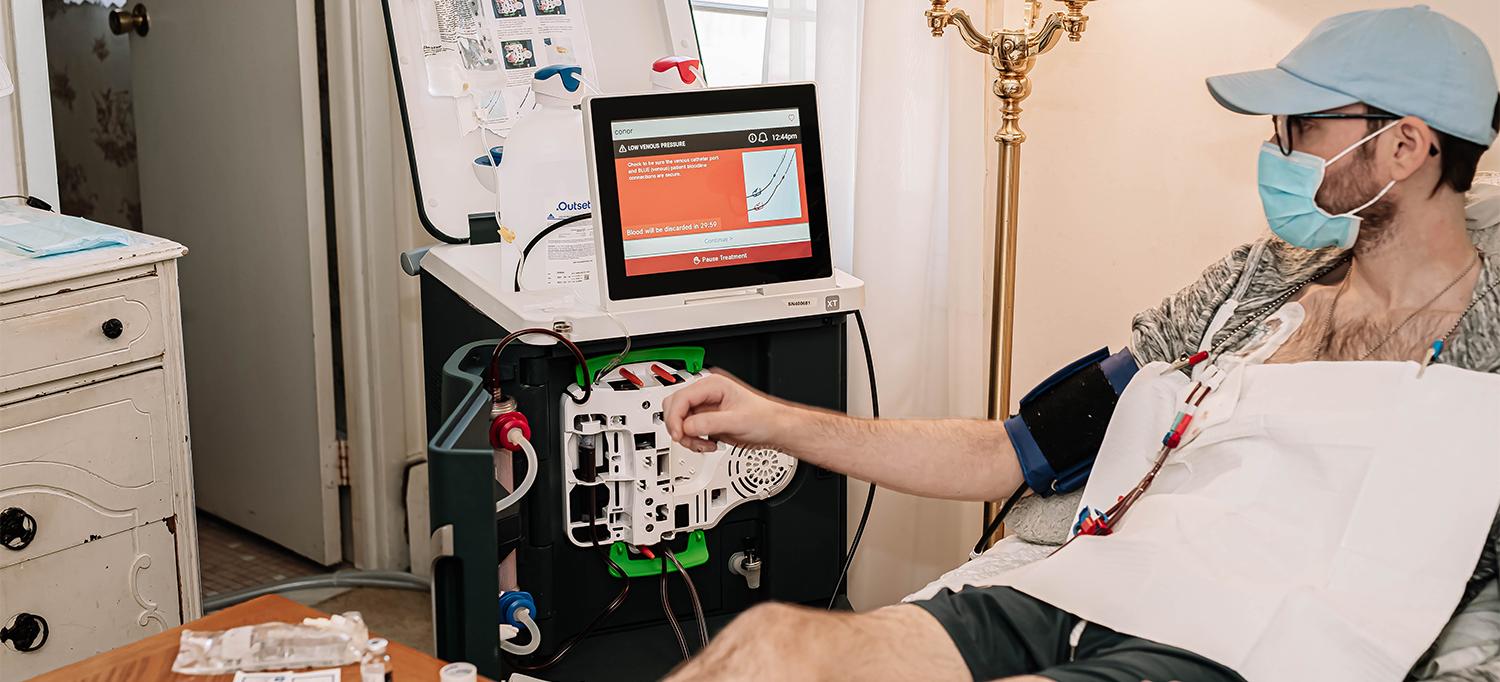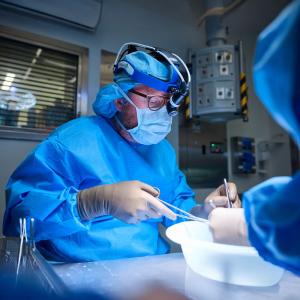A Dialysis Clinic on Wheels Enables Patients with End-Stage Kidney Disease to Transition Their Treatments Directly from the Hospital to the Home

In January 2022, Conor Malangone, a 33-year-old financial consultant from Lake Grove, New York, became the first patient in the nation to benefit from acute-to-home dialysis. After three days of training on the machine in the hospital and six more at home, Malangone, who has a progressive kidney condition, was able to self-administer treatments.
Photo courtesy of Ashleigh Malangone
The dialysis program at NYU Langone Hospital—Long Island has long been nationally recognized for its excellence. In January 2022, the hospital bolstered that reputation when it became the first in the United States to enable patients with end-stage kidney disease to transition directly from inpatient dialysis treatment to independent treatment at home.
The new model of care is a major win for patients. Some 558,000 people in the United States with compromised kidney function require a dialysis machine to help filter toxins from the blood and remove excess fluid and salt. Traditionally, this only happens in hospitals or outpatient dialysis centers and requires three to four office visits a week. But now qualified patients at NYU Langone Hospital—Long Island can take advantage of a compact, automated dialysis machine, approved for home use by the U.S. Food and Drug Administration (FDA) in April 2020.
The self-contained dialysis clinic on wheels is about the size of a mini-fridge, a far cry from the conventional 200-pound version used in inpatient and outpatient settings. During the COVID surge of 2020, when demand for inpatient dialysis soared, Naveed N. Masani, MD, medical director of dialysis services, and Joseph J. Greco, MD, executive vice president and chief of hospital operations, approved the acquisition of five mini-machines to facilitate bedside dialysis treatment.
“It was a game changer,” says Faith Lynch, DNP, RN, director of acute and home dialysis services. “The remote monitoring function drastically decreased nurse exposure to COVID,” she explains. Hospital leadership soon recognized that by making the machine available for home use, a new model of delivering dialysis care would expand the number of patients who could receive care. The hospital now has 11 machines—5 currently used for home treatment, 4 assigned to inpatient units, and 2 available for additional patients who qualify. The device is also deployed on NYU Langone inpatient units in Manhattan and Brooklyn.
“The machine allows my life to be as normal as it can be. I can play golf in the morning and do dialysis at home afterward.”
—Conor Malangone, Dialysis Patient
Studies show that patients who receive home-based dialysis have longer survival rates. “You’re cleansing and removing fluid four or five times a week,” says Dr. Masani. “But the sessions are shorter, so your body has more time to catch up.” That can mean faster recovery from fatigue and less stress on the organs.
The ideal candidate has a care partner, a suitable environment, and adequate dexterity and vision to operate the equipment. Another big must is a medical team with the strategy and resources to manage the transition. “Acute-to-home dialysis is very resource intensive, requiring many hours of training and preparation by clinicians and others,” explains Dr. Masani. “No other hospital is currently offering this service, but NYU Langone has made this important investment because we’re all about enhancing the patient experience.”

